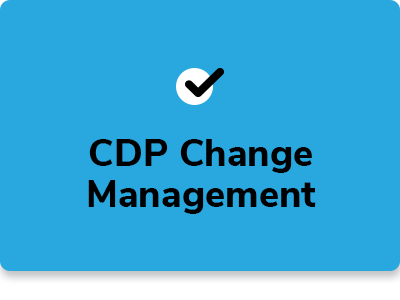Understanding Customer Data Platforms
March 26, 2020“Customer is indeed the king, but running a kingdom is no child’s play
Knight, minister, jester, advisor, are you there for your king in every way?”
A marketer’s job isn’t easy. With each passing day, your customers’ expectations are rising, the amount of customer data available to you is increasing, and the challenge to acquire, engage, and retain customers is becoming more and more difficult.
Well, just like every challenge comes with a solution, so does this one. And the core solution lies in knowing your customers well. The more you understand them, the better positioned you are to win their trust and loyalty.
There is no dearth of customer data today. It depends on brands how efficiently they collect the information and leverage it. And with a proliferation of data collection methods, sky is the limit when it comes to uncovering customer needs and decoding what exactly they want.
As per a recent article by McKinsey Global Institute, data-driven organizations are 23 times more likely to acquire customers, 6 times as likely to retain customers, and 19 times as likely to be profitable as a result.
However, leveraging customer data for marketing can sometimes prove to be a double-edged sword – marketers across industries often find themselves struggling to make sense of data when there’s too much of it.
While customer relationship management (CRM) platforms definitely made it easier to manage data, extracting meaningful and readily-usable insights from customer journeys is still a challenge. Now, Customer Data Platforms (CDPs) have emerged that offer promise to fill the gap, not as a replacement for other tools, but to augment their functioning.
What is a Customer Data Platform?
A CDP is a database software that organizes customer data across numerous touch points and interactions to create a unified view of the customer, accessible to other systems and software. A CDP builds a 360-degree picture of customers on an individual level by collecting real-time data from a multitude of sources – CRM, DMP, social media, web forms, email, website, et al.

This single customer view can then be accessed by third-party tools such as marketing automation tools to execute strategies and measure performance. A CDP is primarily meant for marketers like you, who can use the tool with little technical support.
The CDP Edge
Customer Data Management tools have been around for a long time now. When the CRM software was launched in the 90s, organizations found they could manage interactions with current and potential customers with ease, apart from being able to perform data analysis to drive retention. However, its major limitation was that it managed data for registered clients only, using predefined first-party data. The next frontier was the launch of Data Management Platforms (DMPs) in the 2000s, aimed at planning and executing media campaigns. DMPs could segment anonymous data and work with second and third-party data.
The industry soon realized the need for a more sophisticated tool for delivering an improved customer experience through omni-channel strategies. CRM and DMP platforms created data silos that presented a challenge to marketers. CDPs solved this problem by creating a unified view of the customer on a single, comprehensive platform.
What Kind of Customer Data Does a CDP Collect?
The sheer volume of digital data overwhelms traditional database software. A CDP is built to manage customer data from various channels and touch points. Following are the primary kinds of customer data that CDPs collect and organize:
- Identity Data: Identity data lies at the heart of an individual customer profile in a CDP, allowing an organization to prevent costly duplication. This typically includes information like name, demographics, contact, location, social media handles, company-specific user IDs, etc.
- Descriptive Data: This data presents a more comprehensive picture of a customer. This will include information on their lifestyle, career, hobbies, family, etc.
- Quantitative Data: This data allows companies to understand how a customer has engaged with it through actions and transactions. This includes information on transactions, email communication and interaction, website visits, product views, and customer service interactions.
- Qualitative Data: This offers a clearer context for customer profiles, focusing on motivations, opinions, attitudes expressed.
As is evident, CDPs collect a wealth of customer data, most of which depends on a company’s business and industry.
Difference Between CDP & Other Data Management Platforms
While there is some overlap between a CDP, CRM, and DMP, there are clear differences.
Both CDP and CRM collect customer data for sales and marketing activities. However, CRMs focus on intentional customer data and interactions; for instance, a customer’s telephonic interaction with a salesperson. A CRM collects general customer data, not huge data sets from multiple touch points. On the other hand, a CDP focuses on the lifecycle of a customer’s actions. While a CDP collects offline data, a CRM cannot retrieve offline data unless manually entered.
A DMP sorts and analyzes customer and ad data from multiple sources, with the aim to aid you in learning about customer demographics and buying triggers. DMPs focus on anonymous data (devices, cookies, IP addresses), looking at general behaviours rather than customer-specific ones. While CDPs are built for marketing, DMPs are meant for advertising. While DMP data typically emerges from third-parties, CDP data is collected via a company’s internal user base. As a CDP collects more data, it gets more powerful. On the other hand, DMPs store data only for a short period since ad targeting changes quickly and data soon becomes outdated.
How to Use a CDP – Use Cases
Deploying a CDP can help you achieve both high-level goals as well as lower-level ones. Here are some of its most important use cases:
- Online to Offline: Merging online and offline activities to create a unified customer profile for easy customer identification.
- Customer Segmentation: Segmenting customers based on behaviour to deliver a personalized and omni-channel experience.
- Predictive Scoring: Enhancing customer profiles with predictive data
- Behavioural Retargeting: Running acquisition and retention campaigns through integration with online ad channels.
- Product Recommendations: Building recommendation models and delivering a personalized shopping experience to drive engagement, up-sell, and cross-sell.
- Omni-channel Automation: Personalized messages across channels to enrich customer lifecycle and enhance acquisition and retention.
Using CDP to Improve Customer Lifetime Value
Fostering customer loyalty rests on delivering a quality, consistent, and personalized experience. CDPs make this possible at scale, allowing for nurturing loyalty by solving the problem of siloed data. When data is siloed, creating a consistent and omnichannel customer experience is impossible. By unifying customer data, CDPs make it accessible to everyone in an organization, at all times. By gathering first-party data i.e. information directly from customers, CDPs enable the most effective marketing decisions informed by accurate data. In essence, CDPs equip marketers like you with a powerful tool to manage customer relationships accurately and effectively.
Customers today have high expectations of businesses – personalized services, consistent experiences across channels, and tailored recommendations. To be able to deliver the experience a customer is looking for, and keep them coming back to you, investing in an excellent CDP that offer deep insights, is now a necessity, not a good-to-have thing. Are you CDP-ready already?


